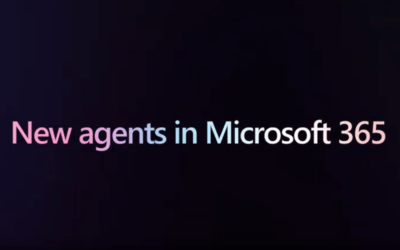The Future of Remote Connectivity: Moving Beyond VPNs
Remote connectivity has become a critical topic, evolving from simple VPN solutions to more advanced technologies that better support hybrid workforces. This shift has been driven by changes in both where people work and how businesses operate, with modern challenges demanding new solutions for secure and efficient connectivity.
This blog marks the first of several posts this month in honor of Cybersecurity Awareness Month, where ANM experts will dive deep into key aspects of cybersecurity. Stay tuned for more discussions on emerging technologies, securing hybrid workforces, and the future of enterprise security.

Remote Work Continues to Drive Big Changes
As recently as 10 to 15 years ago, most employees worked from offices, relying on physical premises to access corporate resources. However, the rise of hybrid work models has changed that dynamic. Today, employees might work from anywhere — home, a local café, or even across the globe. This shift has created new demands for secure access to corporate networks and resources.
In what is referred to as a “café model,” the café represents any location an employee works from, whether it be a corporate office or a Starbucks. The traditional office-centric network model is no longer applicable. This has led to a reevaluation of traditional remote connectivity solutions like VPNs.
The Rise and Limitations of VPNs
Virtual Private Networks (VPNs) have been the go-to solution for remote access for decades, providing users with a secure tunnel to connect to corporate networks. While VPNs have served businesses well in the past, they face several challenges in today’s decentralized, cloud-driven world.
One key limitation is that VPNs often provide users full access to corporate networks once they are connected. This broad access poses a significant security risk, especially if the end-user’s device is compromised. Furthermore, traditional VPN solutions struggle with efficiently managing workloads in cloud environments. As organizations move workloads to public, private, and hybrid cloud environments, VPNs may no longer offer the flexibility and control that modern businesses require.
Security Service Edge (SSE)
In response to these challenges, a new approach to remote connectivity has emerged: Security Service Edge (SSE). SSE is designed to meet the demands of today’s hybrid workforce, offering secure access not only to on-premises workloads but also to cloud-based and SaaS resources. SSE’s key advantage is that it provides secure connectivity while embracing zero-trust principles.
Unlike traditional VPNs, which grant broad access, SSE offers granular control over what users can access based on their identity and job role. This means that instead of opening the entire corporate network to a user, SSE limits their access to specific applications or data, reducing the risk of lateral movement by attackers in the event of a breach.
Additionally, SSE platforms often come equipped with advanced security features like Data Loss Prevention (DLP) and Cloud Access Security Brokers (CASBs), which add an extra layer of security by monitoring and controlling data access.
Is VPN Dead?
Despite the rise of SSE and similar technologies, VPNs are far from dead. VPNs still have use cases, particularly in environments where security and control over access are paramount. For example, in operational technology (OT) environments like critical infrastructure, VPNs provide a level of maturity and reliability that many organizations are hesitant to move away from.
VPNs remain relevant in use cases where businesses have tightly controlled environments. The technology’s long history means that there is a wealth of expertise available to support and maintain VPN infrastructures. This maturity can be an advantage, especially in sectors that are slow to adopt newer technologies due to concerns over security and operational continuity.
The Future of Remote Connectivity
While VPNs will continue to play a role in specific scenarios, the future of remote connectivity lies in technologies like SSE that are built for the cloud era. These solutions offer the flexibility, security, and control needed to support the modern, hybrid workforce. By embracing zero-trust principles and integrating advanced security features, SSE allows businesses to keep pace with the evolving threats and demands of today’s digital landscape.
As businesses continue to navigate the complexities of remote work, choosing the right remote connectivity solution will be crucial. VPNs may still have their place, but for organizations looking for a scalable, secure solution to meet the demands of the future, SSE is a compelling option that ensures both security and productivity.

Chris Hammer
Cybersecurity Solutions Architect
Chris understands that Information Security is more than 1’s and 0’s and he has over 18 years of experience in Information Security and Technology. His experience has taught him that to successfully build an information security program you must manage risk through people, process and technology.
Over his career, he has been responsible for conducting and supporting information assurance and cybersecurity for public utilities, financial services, state and local government, healthcare and software development companies.
Chris specializes in the design, implementation and assessment of secure infrastructure systems and integrated network applications for large, complex networks. He also focuses on processes, techniques and exploits that facilitate the development of tools and methodologies to enhance infrastructure assessments and red teaming activities.
Embracing Gratitude: How Technology Enriches Our Lives Every Day
As Thanksgiving approaches, we’re reminded to pause and appreciate the many aspects of life that enhance our well-being. Often, family, health, and prosperity come to mind. However, there’s one element we might overlook as we gather for the holiday season: the...
Recap from Ignite’s General Session regarding Copilot and Copilot Studio
In today’s General Session on “Unlock the value of Microsoft 365 Copilot and Copilot Studio,” the focus was on Copilot Actions and Copilot Agents. Microsoft continued from where the keynote session left off yesterday, providing more details on these features and their...
Key Takeaways from Microsoft Ignite 2024 Keynote: Copilot, Security, and AI Innovations
During the Keynote of Microsoft Ignite, several announcements were made. Copilot and Security were highlighted, as over 70% of the Fortune 500 companies are now using Copilot. Some notable Copilot features include Screen Understanding, Copilot Actions, and Copilot...


